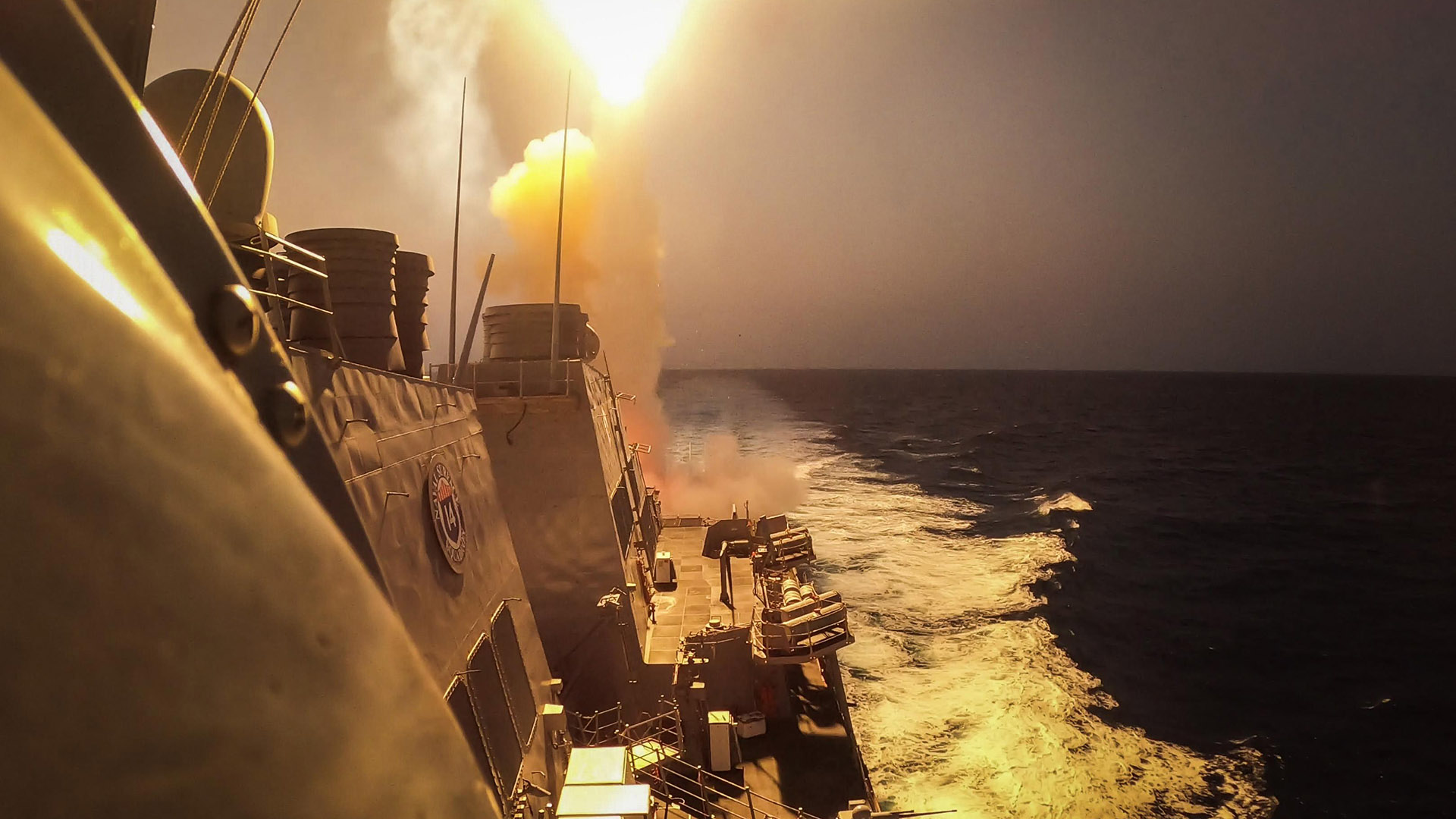

After months of shooting down drones over the Middle East, the cost of those interceptions is getting too high. That’s according to the Pentagon’s chief of weapons procurement, who said that efforts to take out uncrewed aerial systems are now exceeding $100,000 per shot.
William LaPlante, the undersecretary of defense for acquisition and sustainment at the Department of Defense, made the comments earlier this week at a conference hosted by the Center for Strategic and International Studies. C4isrnet reported on his remarks, where LaPlante noted that current efforts to stop drones fired by Houthi militants in Yemen are relying on costly missiles fired from Navy destroyers or fighter jets. The current price tag, he said, is “getting too expensive.”
Since October, American forces in the Red Sea and Gulf of Aden have been shooting down Houthi one-way attack drones and missiles fired from Yemen or before they can be launched. By mid-December 2023, that was at more than three dozen shootdowns. This spring there have been more than 130. The U.S. military has not shared all of the details of what weapons are used in these operations, but the Standard Missile-2, a medium-range surface-to-air missile can cost $2.1 million per shot. After several months of shooting down UAS, that bill is likely high and feeding into the Pentagon’s efforts to find cheaper, cost-cutting alternatives.
The drone shoot downs are only going up. Two weeks ago, U.S. forces joined Israel and other partners in helping shoot down approximately 300 one-way attack UAVs and missiles fired by Iran and its partners toward Israel. The operation was successful, with almost all munitions taken out and no deaths reported in Israel. But instead of cheap counter-drone technology or systems as LaPlante hopes to get, it involved several F-15E fighter jets, Patriot missile systems and other tools. The military has been tight-lipped about what munitions and how many aircraft were used in the interceptions — including if any Air Force pilot now reached ace status — but given the types of aircraft and ships involved, conventional missiles were likely involved.
Instead, LaPlante says the Pentagon’s goal is to get the cost of a drone-intercepting shot down to a fraction of what it currently is. He said that the Department of Defense wants alternatives that cost only tens of thousands of dollars per shot, even as low as just $10,000.
Subscribe to Task & Purpose Today. Get the latest military news and culture in your inbox daily.
This isn’t the first time LaPlante has raised the need for more investment and development of weapons to counter uncrewed aerial systems. In recent months he’s made repeated comments on the need for these weapons to be made “at scale” with a focus on finding cheaper weapon systems to meet the high rate of interceptions happening in the Middle East.
While some smaller commercial drones kitbashed into weapons of war can be taken out by conventional small arms — such as the effective minigun in Ukraine made out of six AKs — larger ones such as the drones fired by Iran and the Houthis have required more expensive and complex counters. A need for wider, cheaper methods of taking them out is likely to grow as militaries develop uncrewed capabilities and stockpiles in the near future.
The U.S. is trying some other methods. In February the U.S. Army ordered hundreds of Coyote 2Cs, a loitering munition meant to taking out enemy drones. Meanwhile, the Army has deployed a second Palletized High Energy Laser, or P-HEL system abroad for counter-UAS purposes this year, Military.com reported. That confirmation came after the U.S. military has been testing different types of laser weapons meant for intercept roles over the past several months.
The latest on Task & Purpose
- 75th Ranger Regiment sweeps Best Ranger, Best Mortar, and International Sniper competitions
- Married Army couple win back-to-back Sapper school awards
- Special Forces engineers are training to dig ditches and destroy tanks
- This is why Marines were at Mar-a-Lago
- Supreme Court sides with Army veteran in overlapping GI Bill benefits case